Exploring Canadian Sparkling Wine
28th March 2023
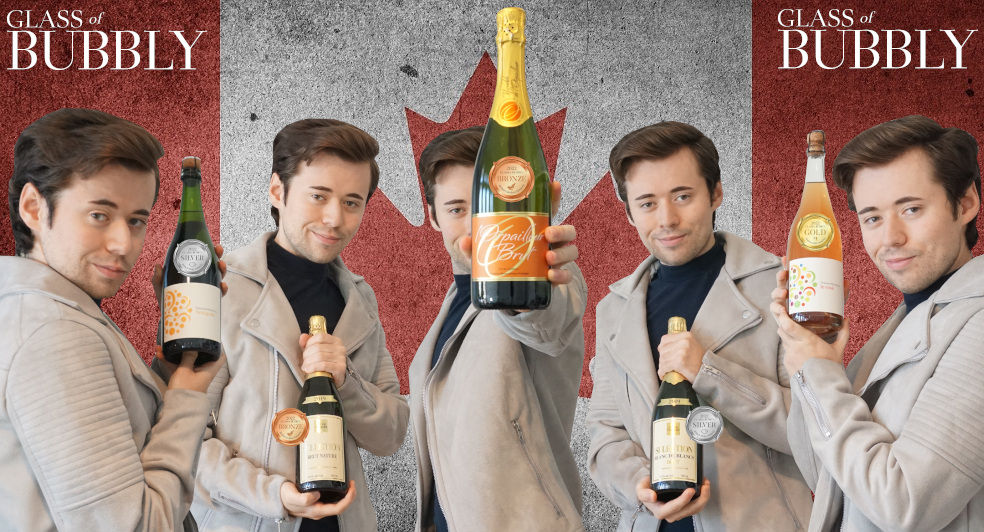
Discovering Canadian Sparkling Wine doesn’t have to be tricky, it’s not as accessible as the big-name Champagnes or Proseccos, but with the country making strides in the industry, it’s certainly worth exploring what this country has to offer.
The story of Canadian Wine production started back in the mid-1800s, a later bloomer compared to other countries, even when considering Canada is a New World Wine country, for example, Peru was the first to start making wine in the New Foundland of the Americas in the 1540s, and America itself started back in the 1500s, with its first commercial Winery opening in 1628.
When we look at the first Canadian vines, we need to see the French explorer by the name of Jacques Cartier, in 1535, he sailed over to St. Lawrence River in Canada, where he discovered a massive collection of wild Grapes.
The first Vineyard planted in Canada, was in British Columbia, during the 1860s in the mesmerizing Okanagan Valley, we would have to wait until the 1930s before the first Winery would be established in that valley. The first Canadian Winery came sooner, by 1866 the first commercial winery opened and by the start of the 1890s Canada would have seen 41 commercial Wineries in operation.
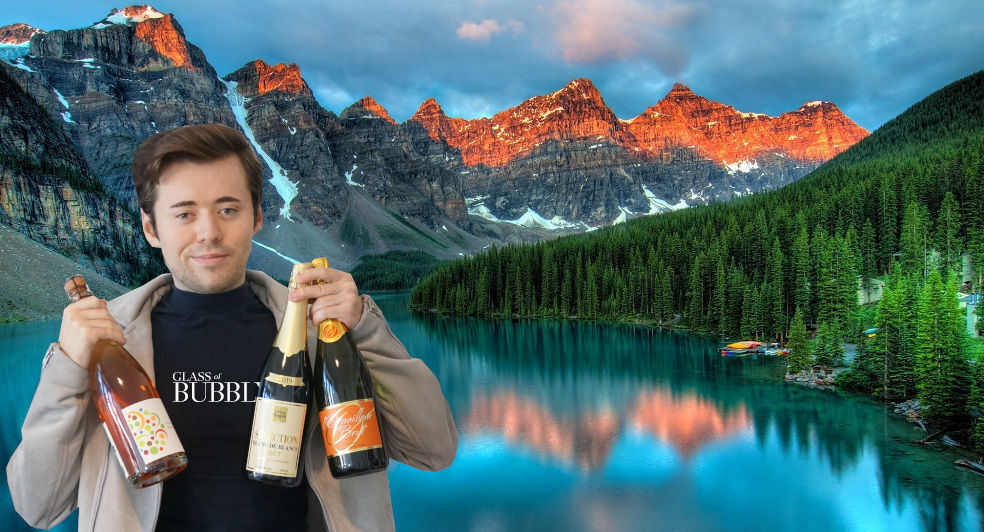
The main wine regions in Canada are Ontario and British Columbia, leading the way in crafting quality Canadian Sparkling Wine.
When we look at Canada as a whole, there are approximately 31,001 acres (12,565 hectares) of vineyards planted on Canadian soil, owned by more than 800 wineries that are currently in operation.
When exploring Canadian Wines, you’ll often see the word ‘Licensed’ in front of the word Winery and you’ll also see ‘Grape Winery’ or just ‘Winery’.
Let’s break the numbers down so we can explore some of their famous wine-growing regions.
Ontario
Ontario currently has around 17,000 acres (6,900 hectares) of vines located in over 150 vineyards.
186 Wineries operate in this region, producing 62% of all Canadian Wine and 68% of all Canadian Wine Exports.
Ontario has three major wine regions within, including Niagara Peninsula, Prince Edward County and the north shore of Lake Erie, although these regions sit on top, you can still find wineries in other parts of Ontario.
British Columbia

Over 280 wineries produce wine in British Columbia.
The most known wine-producing sub-regions of British Columbia are Vancouver Island, the Gulf Islands, Okanagan Valley, Similkameen Valley and Fraser Valley.
Looking at Vancouver Island, the production is always on the more exclusive side, because the climate displays unpredictable characteristics, the wineries never know how their grapes will develop, meaning production on Vancouver Island is never large scale, and normally smaller, trying to assemble quality in the bottle.
Okanagan Valley is British Columbia’s largest wine-producing region and Canada’s second-largest, accounting for 86% of the vines planted in British Columbia, approximately 8,830 acres (3,575 hectares) of vineyards, with around 185 wineries.
Quebec
Quebec now has 160 vineyards, with 49 Wineries.
Due to harsh winter conditions in Quebec, it’s important that each of the grape varieties that are grown in the region can withstand the elements, the grapes grown are resistant to spring freezes and are early ripening, with 40 varieties grown in Quebec, the most commonly planted is the Maréchal Foch, Frontenac, Seyval Blanc, De Chaunac and Vidal.
Canadian Sparkling Wines
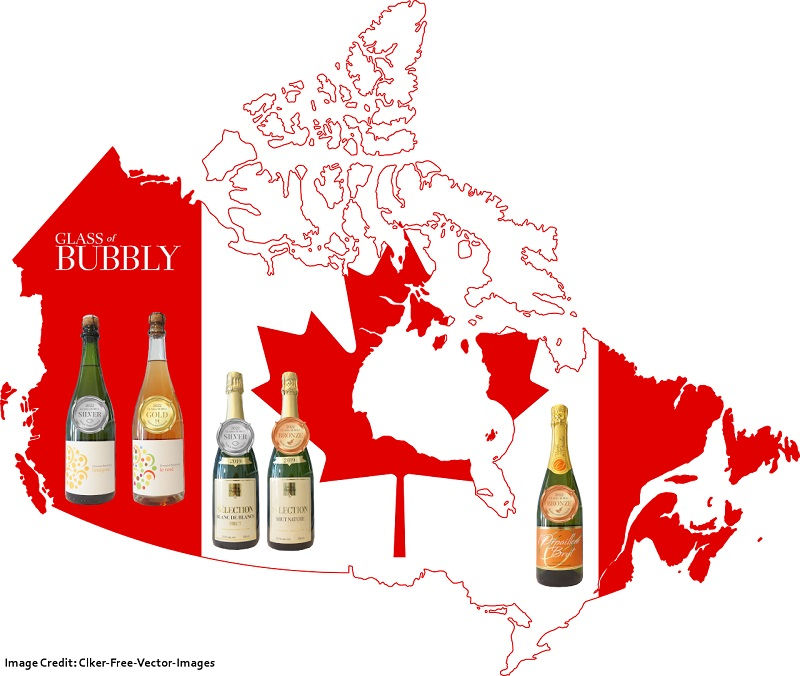
Le Cep d’Argent
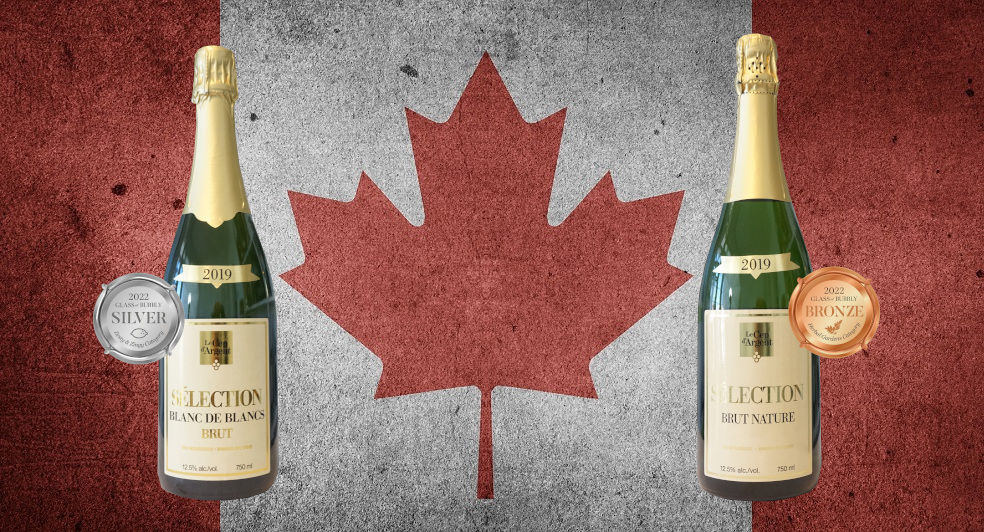
Created by two brothers, François and Jean-Paul Scieur, they studied and researched local winemaking methods to create their Sélection sparkling wine range.
Before their journey into creating Le Cep d’Argent, the brothers started working on the family vineyard in Étoges, which is located in the Champagne-Ardenne region of France, this is where they picked up knowledge along with secrets of the wine-growing world, their parents were winemakers, easily allowing them to learn the art for themselves.
Although destined to produce sparkling wine in Quebec, the brothers made sure they analysed different soils and temperatures to find the correct location, they found it and purchased a 46-hectare plot of land on the western slope of the Appalachian Plateau.
How Much Of Your Sparkling Wine Sales Are Made Up Domestically And Which Countries Do You Mainly Export To?
“All of our sales are domestic as we sell our products only in the province of Quebec.” – Jean-Denis Labonté (Customer Service Coordinator)
Their winery and vineyard are located 200 metres above sea level. The vineyard has gentle slopes and a microclimate for the grapes. The name of their winery was inspired by their new setting, Le Cep translates to ‘The Vine’ in French and the word d’Argent means ‘of Silver’ which they say references the reflections on the lake.
How Does The Snow & Cold Conditions In Canada Affect Your Harvest?
“Since we grow hybrid grapes which have a shorter growth cycle, the weather does not affect us too much. The problem that we have is when there are frost periods in late May, so we have to delay the uncovering of the geotextile sheets that protect our vines during the winter months.”– Jean-Denis Labonté (Customer Service Coordinator)
They planted their first vines in 1985, production started in 1987 and the doors to their winery opened to the public in 1988. The rest of their history is still being written as the winery continues to produce its Canadian Sparkling Wine for the public.
Le Cep d’Argent – Sélection Blanc de Blancs Brut 2019 – Tasting Notes
Aroma – “Soft, delicate yellow citrus, green apples, cooking apples, bruised apple skin.”
Flavour – “Delicate sweet lemon characters, with zestiness on the length, green apple flesh and skin, garden herbs, nettles, freshly cut grass on the palate.”
Silver Medal in the Zesty & Zingy Category at the Glass of Bubbly Awards 2022
Le Cep d’Argent – Sélection Brut Nature 2019 – Tasting Notes
Aroma – “Minerals, saline, citrus, wet stones, yellow floral and fruit aromas.”
Flavour – “Dry mineral, wet stones, soft zesty citrus, yellow fruits with pastry and yeasty flavours on the palate.”
Bronze Medal in the Herbal Gardens Category at the Glass of Bubbly Awards 2022
What’s The Best Food Pairing For Your Canadian Sparkling Wine?
“The best pairing for our sparkling wines would definitely be seafood, especially lobster and oysters.” – Jean-Denis Labonté (Customer Service Coordinator)
Where Do You See The Future Of Canadian Sparkling Wines Going?
“The future of sparkling wine in Canada looks very bright. In our region, the Eastern Townships, the micro-climate and terroir gives us very favorable conditions.” – Jean-Denis Labonté (Customer Service Coordinator)
Vignoble de l’Orpailleur

Four men co-own Vignoble de l’Orpailleur, Hervé Durand, Charles-Henri de Coussergues, Frank Furtado and Pierre Rodrigue.
Hervé Durand discovered Quebec in 1981, he wanted to create his first vineyard outside of France and determined Quebec as the perfect place, he went on to buy the Dunham property which he would turn into Vignoble de l’Orpailleur
He has an agricultural, oenological and economic background, and along with his experience as a winemaker in France, he used his expertise as one of the Winemakers at the winery.
The other Winemaker and 1/4 co-owner, Charles-Henri de Coussergues, was the son of a winegrower from the south of France, he holds a diploma in oenology viticulture. He’s been directing the activities of Vignoble de l’Orpailleur since 1982 and was president of the winery from 2008 to 2016.
How Much Of Your Sparkling Wine Sales Are Made Up Domestically And Which Countries Do You Mainly Export To?
“We sell all of our production in the province of Quebec! We produce annually 22,000 bottles.
“Since 1991, the Orpailleur has offered a Brut, a traditional method developed according to the rules of the art. It was following the arrival of trainees, children of Champagne winegrowers who worked in the vineyard for 3 years, that Charles-Henri de Coussergues was introduced to the vinification of the so-called Champagne method.” – Charles-Henri de Coussergues (Winemaker, Co-Owner)
Another co-owner, Frank Furtado, perhaps you recognise the name, his experience includes leading the Opening and Closing Ceremonies of the Montreal Olympics in 1976 and founding the Concours international des Feux d’artifice de Montréal.
How Does The Snow & Cold Conditions In Canada Affect Your Harvest?
“The harshness of winter is truly the only challenge that sets us apart from most other wine regions in the world. In southern Quebec, the growing (or frost-free) season experiences temperatures as warm as those of other regions such as Kelowna in the Okanagan, British Columbia, or upper Burgundy, Alsace, Loire, Switzerland, or Marlborough, New Zealand.
“From 130 days of growing season in 1982, we went to 185 days. Quite a change in 40 years!
“The cold will damage vines when temperatures reach -18 °C. In 1982, l’Orpailleur developed a mode of protection consisting in supporting the foot of the vine with a big mound of earth, thus protecting it from harsh winter conditions. Today, two-thirds of the vineyard is protected by hilling-up and the remaining third by the placing of geotextile sheets.” – Charles-Henri de Coussergues (Winemaker, Co-Owner)
The last co-owner of Vignoble de l’Orpailleur to mention is Pierre Rodrigue, a background in media, communications and culture, Pierre is responsible for the contractual and legal management of l’Orpailleur, referring to himself as the guardian of the soul of the company, he watches over the history of the pioneers and founders.
Vignoble de l’Orpailleur – L’Orpailleur Brut – Tasting Notes
Aroma – “Sweet and ripe yellow stone fruits, peach, apricot, ripening floral notes, yellow and white floral.”
Flavour – “A combination of yellow floral and yellow stone fruits with yellow fruits and citrus with notes of minerals on the palate.”
Bronze Medal in the Herbal Gardens Category at the Glass of Bubbly Awards 2022
What’s The Best Food Pairing For Your Canadian Sparkling Wine?
“As an aperitif or accompanied by snail puff pastry, smoked salmon canapes, salmon fillet and cream sauce, ceviche, brie with apples and walnuts, fig and honey ricotta croutons, lobster, shrimp salad. It also perfectly accompanies your moments of joy and happiness.” – Charles-Henri de Coussergues (Winemaker, Co-Owner)
Where Do You See The Future Of Canadian Sparkling Wines Going?
“Quebec is a major consumer of sparkling wines. For the moment the province of Quebec imports a lot of sparkling wines from abroad and for the moment local production remains quite marginal with 70,000 to 80,000 bottles annually. Everything suggests that in the next few years it will be in turmoil! We anticipate that the production of traditional methods will be greatly expanded with a climate and grape varieties that lend themselves well to this type of winemaking.
“A special thanks to Laure de Coussergues (Communications Manager) for his help in answering the above questions!” – Charles-Henri de Coussergues (Winemaker, Co-Owner)
Domaine Bergeville
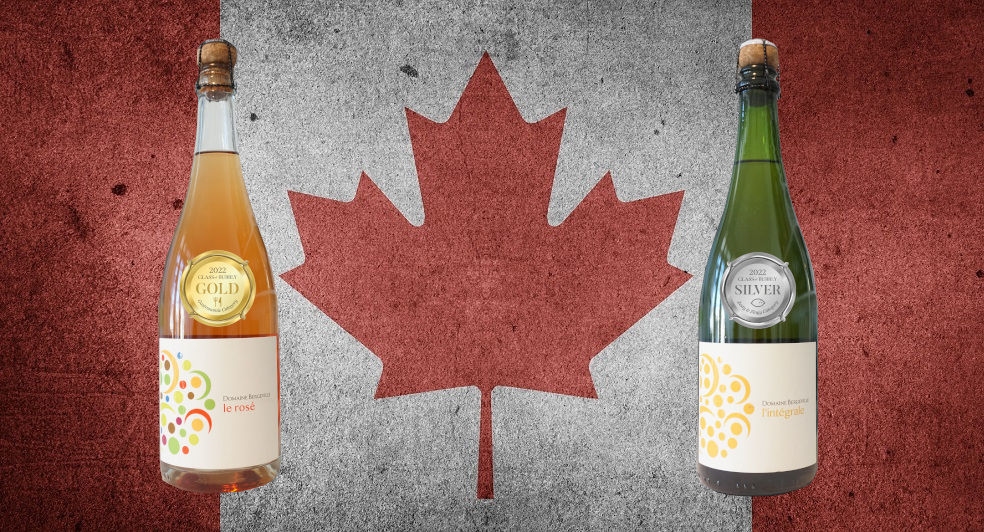
Located in the highest altitude wine-growing region in Quebec, planting their hybrid vines and their Vitis Vinifera.
This high-altitude region is the Appalachian Highlands, which is in the heart of the Eastern Townships.
As mentioned above, the Quebec wine region is more fragile, with this winery having to deal with intense -30°C colds in winter and heat waves of 30°C in summer, this is where their vines try and withstand the snow, frost and short ripening period, but even then, these vines are fragile, and the winery never knows how many grapes will come through, but despite the harsh and challenging conditions, the winery is happy to devote themselves to the process.
Domaine Bergeville treats their vineyard as a living being, forwarding biodiversity and giving back to their land and their vines.
They place their vintages on a 15 to 36 months lees to help evolve the contents inside the bottle, they say during their second fermentation, their wines refine and concentrate their character.
Domaine Bergeville – Le Rosé 2020 – Tasting Notes
Aroma – “Soft pink floral, orange blossom, raspberries, strawberries, pink grapefruit, peach, apricot with toasty, oaky, toast crumbs and more on the aroma.”
Flavour – “Soft, delicate expressions of pink and orange characters, orange blossom, orange skin, pink floral and blossom, toasty and yeasty notes with a lovely display of peach skin on the palate.”
Gold Medal in the Gastronomic Category at the Glass of Bubbly Awards 2022
Domaine Bergeville – l’intégrale 2018 – Tasting Notes
Aroma – “Yeasty, toasty, zesty citrus, yellow fruits, white fruits.”
Flavour – “Dry crisp, yellow fruits, citrus, floral, minerals, apple flesh, saline and pastry notes on the palate.”
Silver Medal in the Zesty & Zingy Category at the Glass of Bubbly Awards 2022
Image Credit: – Canadian Flag – Canadian Flag – Canada Lake Mountains – Canadian Flag – River Stream – Mountains
![]()
Oliver Walkey
Champagne and Sparkling Wine Writer, Focused on Bringing the Exciting and Fascinating World of Bubbly to You.
